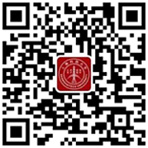
「Deep Space XR Workshop」is an interdisciplinary interactive design innovation attempt hosted by DIV Lab. Under the guidance mode of the teachers in the laboratory through [online & offline], around the theme of "deep space satellite", the students completed the whole process including creative concept design, interaction design, 3D model design and 3D printing practice, XR visual animation design, software and hardware implementation and interactive installation deployment and other interdisciplinary work. The students made in-depth use of digital platforms and design tools including Unity engine, Vuforia extended reality, Solidworks, Blender, Cinema4D, etc., and completed the extended reality works with high quality in two weeks.
Extended Reality (XR for short),is a collective term for virtual reality (VR), augmented reality (AR), and mixed reality (MR). The immersion of seam transitions. In addition to displaying virtual digital information in the real world, XR can better simulate sensory experiences such as vision, hearing, touch and even taste. In the future development of XR, it may bring us changes in human-computer interaction.
At the application level, imagine that doctors use XR technology to simulate operations before performing an operation, and machine learning and artificial intelligence provide services such as consultation, monitoring and evaluation to improve the success of the operation; after students enter the classroom, XR technology changes The sensory environment of the classroom is adapted to the teaching theme of the day, allowing students to enter the world of learning more attentively.
XR technology is widely used in professional fields such as games, shopping, construction, medical care, education, etc., to conduct research and development on XR technology, explore the new situation of human-computer interaction, and gradually open up the boundary between reality and virtuality.
Deep Space XR Workshop Documentary Video
The workshop starts with the creative part first. In order to open up the students' minds, Professor Uwe and Yinan from the University of Auckland guided everyone to get inspiration for creativity and design from the objects around them and discuss them. Under some simple rules, the students designed spaceships for different "aliens", and even formed the world view of the works. Afterwards, the workshop was divided into two parts: "Reality" and "Virtual" - in the "Reality" part, students used 3D printing technology to obtain the physical model of the spacecraft they designed. In the "Virtual" part, students used software platforms such as Blender, Unity, and Vuforia to complete model establishment, effect design, and object gesture recognition. In the end, the 3D printed physical model was installed on the exquisite rotating device, and the AR software was deployed on mobile phones, tablets and other terminal devices, and the wonderful combination of virtual and reality appeared in the exhibition hall. During the experience, the audience can pick up the tablet and point the camera at the satellite model, and then they can enjoy the 3D shape and dynamic effect of the satellite flying in the deep space. This includes multi-dimensional interactions such as sound experience, satellite structure changes, and the surrounding environment in deep space.
Through the two-week cooperation, the students created many imaginative XR works, and also experienced the charm of interdisciplinary research. The collision of thinking in different fields by students from various colleges shows the good atmosphere of ShanghaiTech University, and the strong ability of students to cooperate in cross-disciplinary research.
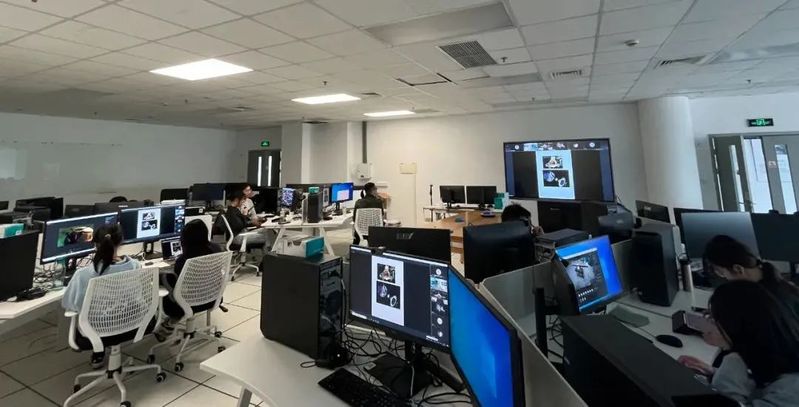
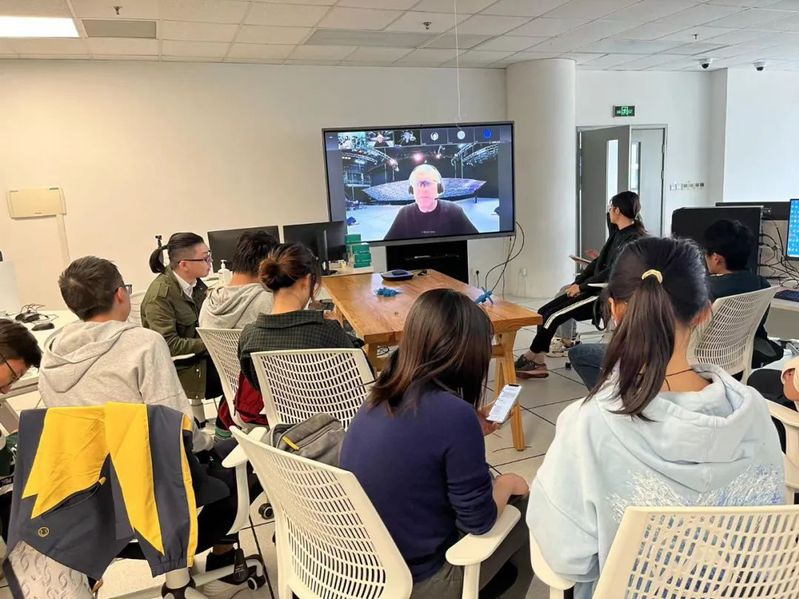
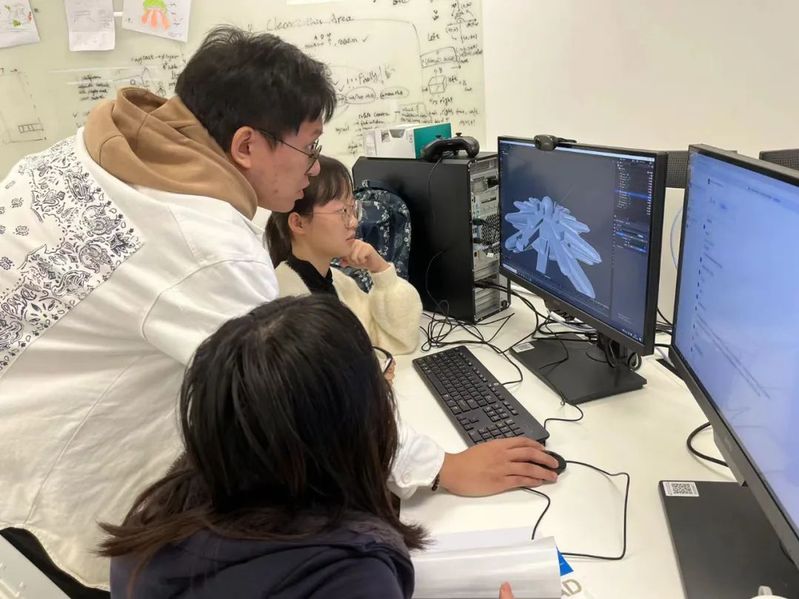

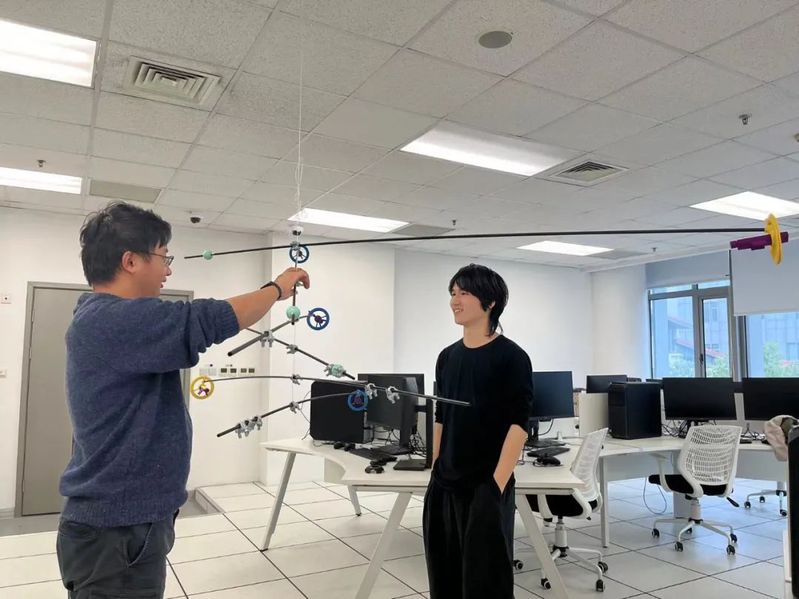
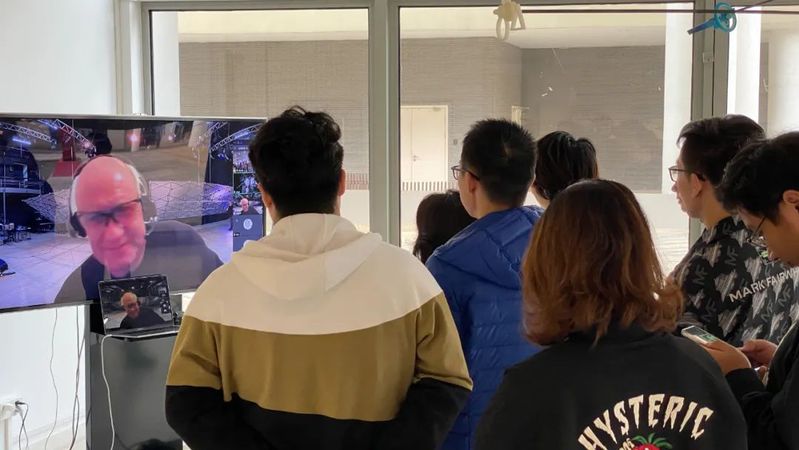

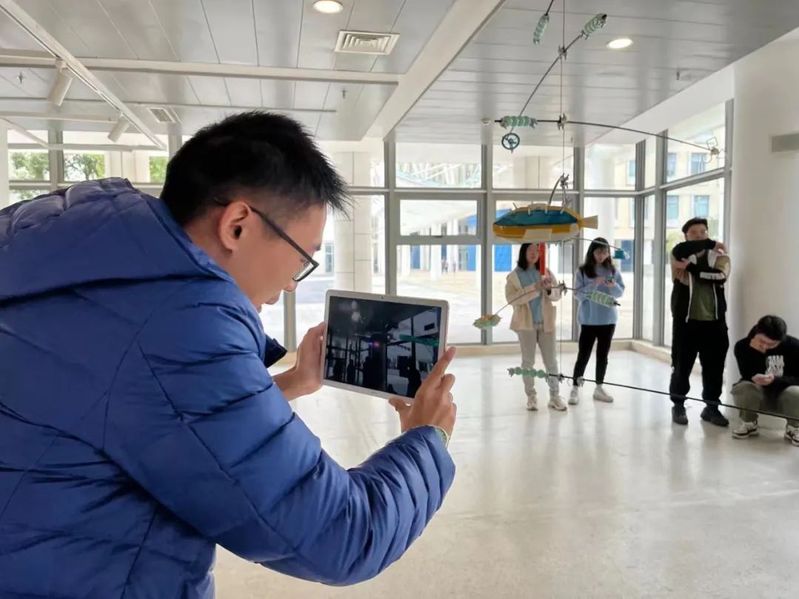
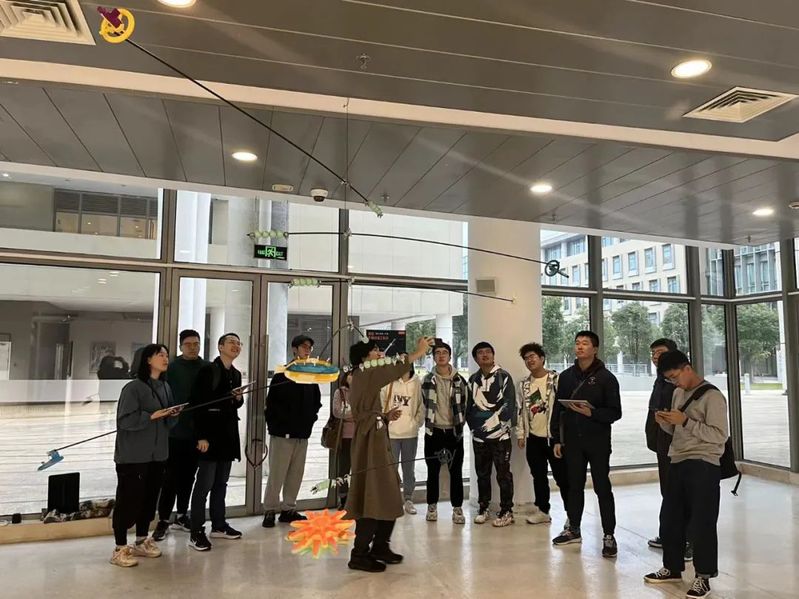
Project display
Team Bifrost
Students: Cangli Yao, Bo Yang

The whole project went through multiple links such as concept/solid sketch and virtual particle design, Solidworks modeling, light curing 3D printing, painting and texture, Vuforia engine tracking, and Unity virtual scene addition. Finally, it includes the (physical) annular space station, its flying unit and the space environment (virtual) in which it is located.
Team Viewer
Students: Yuqing Yao, Yuwei Mao
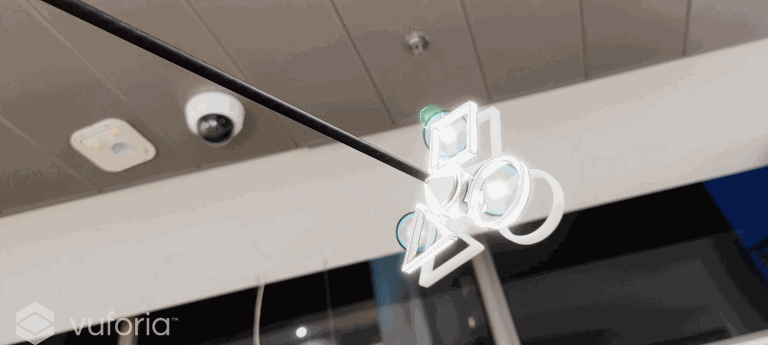
Our work is inspired by the role of a 「planet observer」, through hollowed-out models of different shapes representing different sensors, observing the life activities and resources on the 「planet」.
Team Casual
Students: Chuyi Zhao, Shuyue Wang

Our original vision was a central diffuser, glowing spacecraft for visually impaired aliens. After imitating a cybernetic design and modeling, it was decided to cover the surface with sweet fluorescent colors to increase the sense of technology. The overall tone is light, combined with the little star VR special effects to present a dreamy and lovely feeling. The lift-type entrance and exit are suspended above the spacecraft. Hopefully the visually impaired aliens will like such a ship.
LL Team
Students: Yuwei Luo, Xiyue Lin

A simple little ship, mainly inspired by the crew's bottle caps and correction belts, and added small turrets, solar flanks, lights and exhaust to this basis.
YYQ
Students: Chenyang Zhang, Renyu Cai

We merged the knowledge of information, life, matter, and philosophy to establish a world view for the "only hearing aliens", and based on this theory, we built their spacecraft - "Portoto".
KekTeam
Students: Chuang Li, Zezhou Peng

This project is designed with a flat ring as the main body by thinking about the way the space station generates gravity, the source of energy and some functions, with two solar wings and an antimatter gun attached. After scanning through the app, you can see how it rotates in the vast sea of stars, and you can expand the huge solar panel or watch the process of bombarding other exhibits by antimatter cannons through button interaction.
Student testimonials
Bo Yang
Completing the project is a very fulfilling thing. Thanks to Hongsheng Gao and Hua Yang from DIV Lab, Yixuan Chen from CASE, and Professor Yinan and Uwe from arc/sec Lab for their guidance, which gave me the opportunity to systematically use my own Professional skills to complete such a fun project design.
Yuqing Yao
There are a lot of gains during the workshop activities. From learning basic design principles to some basic Unity development knowledge, I also learned some augmented reality-related interaction design experience. Teachers from the University of Auckland and ShanghaiTech University accompanied us through a very knowledge-intensive two weeks.
Chuyi Zhao
Very happy workshop, can experience a little bit of VR production. The teachers are all lovely. Thanks to the teacher Jie Wang who borrowed the studio and the reliable teammates who are conscientious and responsible, and look forward to the further development of the creative human-computer interaction.
Shuyue Wang
Very happy to be able to make something that can really interact with each other! I am very satisfied to see the spacecraft look a little bit better! I am very grateful to the School of Creativty and Art for providing such an opportunity! Hope to hold more workshops in the future!
Xiyue Lin
The half-month workshop activity has taught us a lot. Familiar with 3d modeling software, learned how to make animations, particle effects and use related plug-ins in Unity. The teacher took us to learn step by step from scratch, from inspiration to planning, to specific implementation and printing display, very thoughtful Gave us a great help. I hope that more workshop activities will be carried out in the future, so that we can learn more about the charm of art~
Zezhou Peng
I am very happy to have this opportunity to participate in the workshop organized by the School of Creativty and Art. I have some understanding of virtual reality and augmented reality before, but I have been limited to how to use it, and I have never thought about actually participating in the use of this technology and In terms of project development. Although the workshop only showed us a relatively simple augmented reality production process combining unity and vuforia, it really opened my eyes. This can't help but make me consider the possibility of adding AR in the next game production and other aspects including the presentation of scientific research results. It can be said that I have gained a lot.
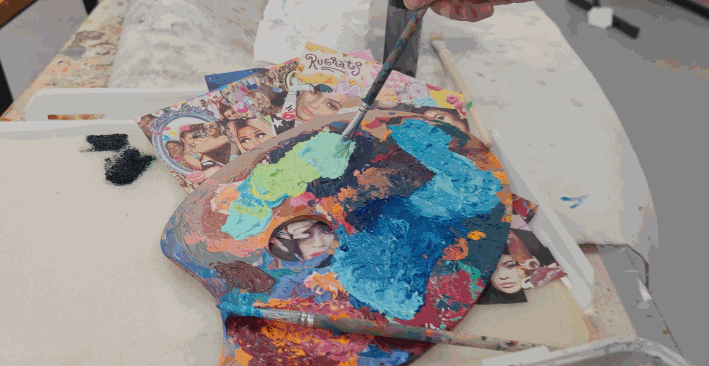
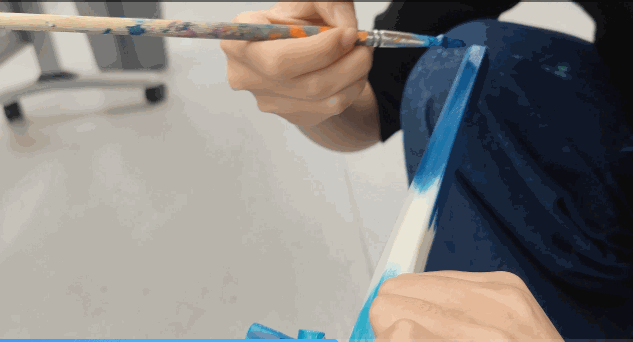
Model coloring
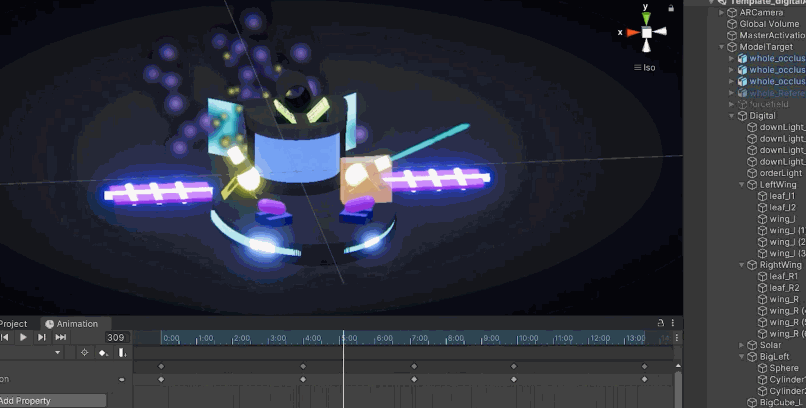
Engine software operation
Student
Chenyang Zhang
School of Information Science and Technology,Computer Science,Undergraduate
Chuang Li
School of Physical Science and Technology,Physics,PhD
Renyu Cai
School of Physical Science and Technology,Material science,Undergraduate
Zezhou Peng
School of Physical Science and Technology,Physics,Master
Cangli Yao
School of Information Science and Technology,Computer Science,Undergraduate
Yuwei Luo
School of Information Science and Technology,Computer Science,Undergraduate
Bo Yang
School of Information Science and Technology,Computer Science,Undergraduate
Linxi Yue
School of Information Science and Technology,Computer Science,Undergraduate
Shuyue Wang
School of Information Science and Technology,Computer Science,Undergraduate
Yuwei Mao
School of Information Science and Technology,Computer Science,Undergraduate
Chuyi Zhao
School of Information Science and Technology,Computer Science,Undergraduate
Yuqing Yao
School of Information Science and Technology,Computer Science,Graduate
Academic host
Hua Yang DIV Lab
Associate Professor, School of Creativity and Art, ShanghaiTech University
DIV Lab Executive Director.
Workshop host
Uwe Rieger arc/sec
Associate Professor of Design and Design Technology at the University of Auckland.
Yinan LIU arc/sec
Coordinator of the Centre for Digital Studies at the School of Architecture and Planning, University of Auckland.
Technical Support
Hongshu Gao DIV Lab
Designer of DIV Lab, School of Creativity and Art, ShanghaiTech University.
Yixuan Chen CASE
Graduate student of CASE 2020, School of Creativity and Art, ShanghaiTech University.
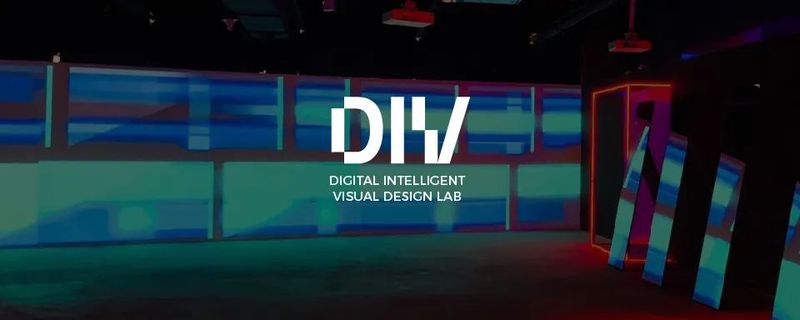
Design Interaction Visual Lab (DIV) is dedicated to exploring the possibilities in the creative industry and expanding the boundaries of the creative processes. The creative products will foster new types of social interactions among citizens, designers and scientists, where everyone will participate in the interactive design in areas of life-style, smart city, smart entertainment, smart social welfare and education. Adopting a cross-disciplinary approach, the areas of DIV spans the research and practices in design, fine arts, human-computer interaction, participatory design, design for behavioral change, Artificial Intelligence, engineering, computer science, sociology, anthropology, communications, business, cultural studies and other relevant social science areas. The main focus of DIV is on the relationship between people and innovative technologies, with the goal of creating more useful interactions between people and their living environments in the future smart urban landscapes.
School of Creativity and Art, ShanghaiTech University
Established in November in 2017, School of Creativity and Art aims to develop an institute of higher education that is at the forefront of our country. We will be fully engaged internationally to promote innovation and collaboration of design and creative arts with advanced science and technology to provide a pioneering platform for study, research, experiment, exchange, growth and breakthroughs. Our goal is to challenge the next generation of creative art professionals to inject new inspirations and momentum into China and provide humanity advances in our cultural and spiritual lives.
The School of Creativity and Art offers a minor in "Interaction Design"
From the second semester of the 2021-2022 academic year, the School of Creativity and Art will offer a minor in "Interaction Design".This minor will focus on: interdisciplinary research, innovation in forward-looking interaction design, and the cultivation of design thinking and design ethics.
Obtaining the Interaction Design Minor Professional Certificate will help you enter related cross-border fields in the future, such as large Internet companies, cutting-edge interactive technology research institutions, etc., or further study in first-class institutions at home and abroad, such as Carnegie Mellon University, Stanford University, Massachusetts Institute of Technology, Royal Academy of Arts, Italy, Milan Polytechnic, etc.
Application object:Ordinary undergraduate students of ShanghaiTech University in the second year and above can apply for the program.

